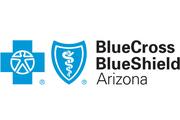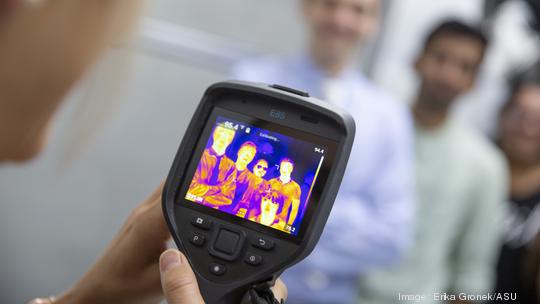
The heat is on — a phrase used to describe a high-pressure situation or an imminent threat — is how Konrad Rykaczewski expresses what we face today in a world where actual heat and its consequences are intensifying.
And it’s not just in Arizona.
Increasing temperatures are having dramatic impacts that are expected to accelerate until we find ways to better shield ourselves from the heat or adapt to live with it, says Rykaczewski, an associate professor of mechanical engineering in the School for Engineering of Matter, Transport and Energy, part of the Ira A. Fulton Schools of Engineering at Arizona State University.
Due to climate change and poor working and living conditions in many places around the world, overexposure to heat is expected to remain a persistent threat to human well-being as a major cause of illness and death, an impediment to quality of life and a drag on economic activity and prosperity, says Rykaczewski, who is also a researcher in ASU’s Julie Ann Wrigley Global Futures Laboratory.
A report from the U.S. Occupational Safety and Health Administration and information from the National Heart, Lung, and Blood Institute confirm why rising temperatures are cause for serious concern.
Rykaczewski says a big roadblock to solutions is the lack of a comprehensive understanding of the progression of the physical dangers posed by extreme heat exposure, both indoors and outdoors, from simple physical discomfort to heat stress, physical strain, sickness and death.
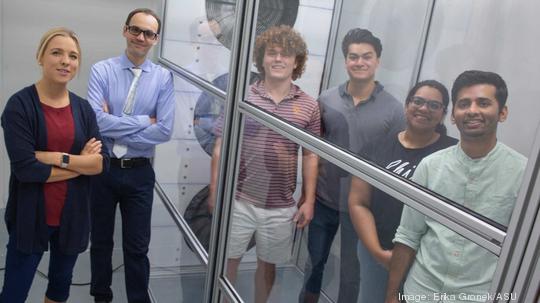
In the quest to find better ways to prevent heat overexposure and also adequately cope with it when it happens, Rykaczeswki is teaming with ASU colleagues Assistant Professor Ariane Middel and Associate Professor Jennifer Vanos.
Middel, who has joint faculty positions in the School of Computing and Augmented Intelligence, part of the Fulton Schools of Engineering, and the School of Arts, Media and Engineering, is an urban climatologist focusing on the development of urban design and infrastructure to protect people from extreme heat and climatic uncertainty.
Vanos, a faculty member in ASU’s School of Sustainability, works with Middel in ASU’s Urban Climate Research Center. Her expertise includes studies of sustainable and healthy urban spaces with an emphasis on extreme heat, air pollution and vulnerable populations.
The team is focusing is focusing on better ways to protect those populations from debilitating heat exposure. The results of their work recently earned $2 million in funding over the next four years from the National Science Foundation (NSF) Leading Engineering for America’s Prosperity, Health, and Infrastructure (LEAP HI) program.
“This funding allows us to come at this big societal challenge of extreme heat impacts on health from multiple angles due to our diverse backgrounds,” Vanos says. “Because of this, our approaches are novel and will enable us to study the problem in new ways, helping us create new methods and solutions.”
The team is developing next-generation experimental tools to measure heat exposure and build new models to better predict the effects of human interaction with hot environments.
They’ll use the tools and models to provide extensive data about human exposure to heat and the potential effects on diverse populations in differing environmental scenarios, as well as ways to effectively deal with extreme heat in various circumstances.
Among tools they are using is a mobile biometeorological sensing station named MaRTy, created and deployed by Middel for her work to help metropolitan areas confront urban heat island effects that have been escalating rapidly in high-population regions in recent years.
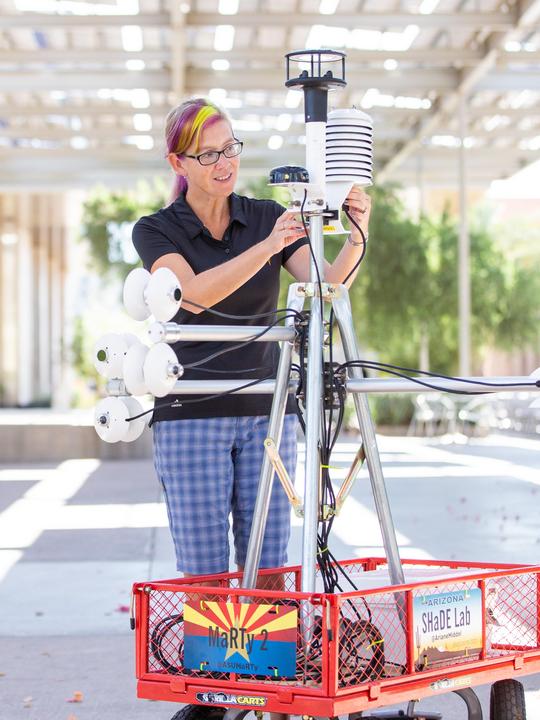
There’s also ASU ANDI, a human-shaped and sensor-equipped manikin made by Thermetrics, a developer of thermal testing equipment technology, including thermal manikin systems. A manikin is a life-sized anatomical model used to represent the human form for medical studies and other scientific experimentation, research and education.
Thermal manikins can be instrumented to measure the effects of human exposure to different heat intensities and mimic the human thermoregulatory system’s response to different thermal situations. ANDI, for example, generates ‘metabolic’ heat, sweats, breathes and walks, Rykaczewski says.
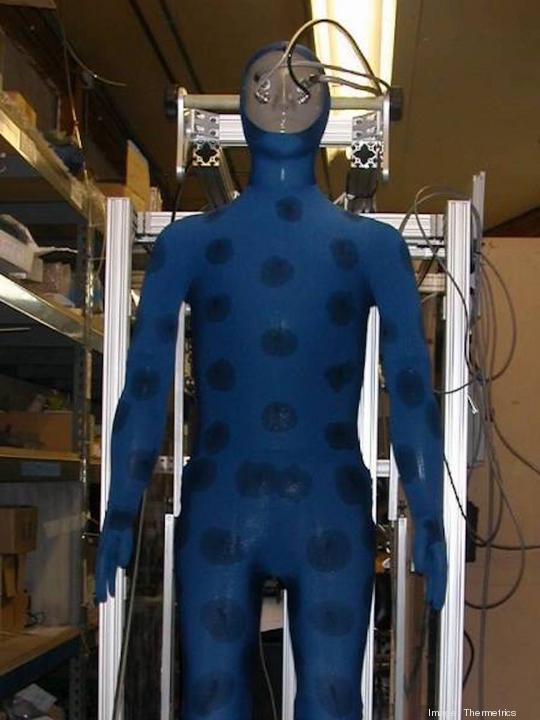
For ASU’s purposes, the ANDI manikin, funded by a $413,000 NSF Major Research Instrumentation Program grant awarded to Rykaczewski, Vanos, Middel and others in 2021, has been modified to enable measurements in extremely hot indoor and outdoor settings.
“Our manikin can be exposed to extreme heat longer than what could be safely done with human subjects, so it enables unique measurements of current and future climate impacts on people,” Rykaczewski says.
When not being used in the field, ANDI will reside in a new environmental chamber that is part of the Human Biometrology Lab directed by Vanos in ASU’s Rob and Melani Walton Center for Planetary Health.
The temperature, humidity, radiation and wind in the chamber can be adjusted to expose ANDI not only to simulations of the hottest summer day in Arizona, but also to the most humid summer heat in Florida, as well as even hotter climates expected in the future, Rykaczewski says.
Through ANDI’s capabilities and other advanced tools, the research team expects to develop more precise ways to quantify the impacts of heat on humans.
“MaRTy will measure the impact of the built environment on radiative fluxes, and ANDI can tell us how the human body will respond to those fluxes,’ Middel says.
In a related project also supported by the NSF, Rykaczewski and professor Stavros Kavouras, assistant dean of ASU’s College of Health Solutions, are exploring various aspects of human sweat. Their goal is to measure the microscale dynamics of sweat evaporation in various contexts across a large set of environmental complexities and situational variants.
That information should yield new data relevant to fields ranging from the development of new medical diagnostics and health care practices to the design of built environments in ways that provide protection from severe overheating.
“We want to provide new knowledge that can help guide the making of more intelligently designed public infrastructure, buildings, homes and even clothing that will shield people from overexposure to heat,” Rykaczewski says.
Arizona State University has developed a new model for the American Research University, creating an institution that is committed to access, excellence and impact. ASU pursues research that contributes to the public good, and ASU assumes major responsibility for the economic, social and cultural vitality of the communities that surround it. For more information, please visit ASU.edu.

